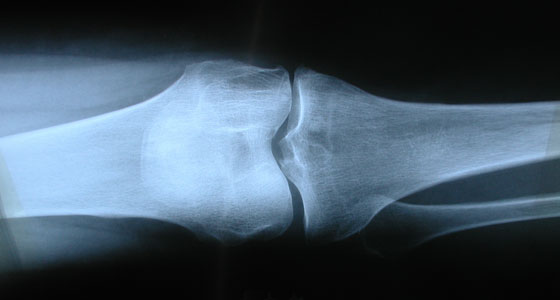viaAidsmap, by Michael Carter
 Treatment with antiretroviral drugs reduces the risk of low-impact fractures, according to a case-controlled study published in the on-line edition of AIDS. Investigators compared fracture incidence between patients taking HIV therapy and non-treated individuals.
Treatment with antiretroviral drugs reduces the risk of low-impact fractures, according to a case-controlled study published in the on-line edition of AIDS. Investigators compared fracture incidence between patients taking HIV therapy and non-treated individuals.
Although there are concerns that tenofovir (Viread, also in the combination pills Truvada and Atripla) causes reductions in bone mineral density, the investigators found no robust evidence that the drug was associated with an increased risk of fracture.
“Our study identified an overall reduced risk for fracture in persons treated versus not treated with antiretroviral drugs for HIV infection,” write the authors.
With the right treatment and care, the prognosis of many HIV-positive patients is excellent. However, there is an increased prevalence of low bone mineral density in patients with HIV. The exact causes are uncertain, but may include HIV infection itself, the ageing of the HIV-infected population, and the side-effects of antiretroviral therapy. Nor are the clinical consequences clear. Some studies have shown that patients taking HIV treatment have an increased risk of fragility fractures, but such findings have been contradicted by other research.
Because of this continuing uncertainty, investigators in the US designed a case-controlled study involving patients who received HIV care between 1997 and 2008. The incidence of low impact fragility fractures was compared between patients who received HIV therapy lasting at least twelve months and individuals with no history of antiretroviral treatment. The relationship between specific classes of antiretrovirals, individual drugs and duration of therapy and fracture risk was also examined. Finally, because of tenofovir’s association with low bone mineral density, the investigators compared fracture incidence between patients taking this drug and that seen among individuals taking abacavir (Ziagen, also in the combination pills Kivexa and Trizivir).
Read the Rest.
[Content that is linked from other sources is for informational purposes and should not construe a Mapping Pathways position.]
 Treatment with antiretroviral drugs reduces the risk of low-impact fractures, according to a case-controlled study published in the on-line edition of AIDS. Investigators compared fracture incidence between patients taking HIV therapy and non-treated individuals.
Treatment with antiretroviral drugs reduces the risk of low-impact fractures, according to a case-controlled study published in the on-line edition of AIDS. Investigators compared fracture incidence between patients taking HIV therapy and non-treated individuals.Despite the overall beneficial effect of treatment, the investigators found a complex relationship between drug class and duration of therapy and fracture risk.
Although there are concerns that tenofovir (Viread, also in the combination pills Truvada and Atripla) causes reductions in bone mineral density, the investigators found no robust evidence that the drug was associated with an increased risk of fracture.
“Our study identified an overall reduced risk for fracture in persons treated versus not treated with antiretroviral drugs for HIV infection,” write the authors.
With the right treatment and care, the prognosis of many HIV-positive patients is excellent. However, there is an increased prevalence of low bone mineral density in patients with HIV. The exact causes are uncertain, but may include HIV infection itself, the ageing of the HIV-infected population, and the side-effects of antiretroviral therapy. Nor are the clinical consequences clear. Some studies have shown that patients taking HIV treatment have an increased risk of fragility fractures, but such findings have been contradicted by other research.
Because of this continuing uncertainty, investigators in the US designed a case-controlled study involving patients who received HIV care between 1997 and 2008. The incidence of low impact fragility fractures was compared between patients who received HIV therapy lasting at least twelve months and individuals with no history of antiretroviral treatment. The relationship between specific classes of antiretrovirals, individual drugs and duration of therapy and fracture risk was also examined. Finally, because of tenofovir’s association with low bone mineral density, the investigators compared fracture incidence between patients taking this drug and that seen among individuals taking abacavir (Ziagen, also in the combination pills Kivexa and Trizivir).
Read the Rest.
[Content that is linked from other sources is for informational purposes and should not construe a Mapping Pathways position.]

No comments:
Post a Comment